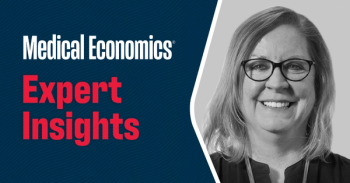
Now what? The imminent dangers and emerging opportunities for physicians
Independent physicians likely have two options to sustain their practices into the future.
Medical Economics and Specialdocs Consultants present a free webinar for physicians on the topic of: “Now what? The Imminent Dangers and Emerging Opportunities for Physicians.” The webinar is scheduled for June 17 at 7pm Eastern.
Physicians have been at the forefront of unprecedented turmoil during the COVID-19 emergency. This crisis has compounded structural faults that have been consistently observed but inadequately addressed over the past decade.
Primary care physicians, in particular, have found themselves in turbulent times as office visits evaporated overnight due to shelter-in-place orders and patients’ understandable fear of potential infection. In response to decreased in-person visits, telehealth visits swelled to extraordinary levels, thanks in large part to temporary relaxation of regulations.
As a result, doctors have had to rethink staffing, real estate and other costs of providing care. They also should consider that there is no clear answer on how long the new guidelines and associated reimbursement rates for telehealth will remain in place. With so many unknown factors in play, physicians face an uncertain future.
Now what?
It is what many doctors are asking themselves, and it encapsulates several separate questions:
1. What is the next unforeseen and life-altering event I will need to address if I stick with the status quo?
2. What will the physician landscape look like in one, three or five years?
3. What should I do now?
Change will remain constant, and one of the seminal lessons of COVID-19 is that no one can perfectly predict how or when the next significant challenge will arise. Similarly, specific forecasts of the future state of healthcare are notoriously inaccurate. The best step toward an answer is to first observe principal trends and envision where independent primary care will fit within them. From there you can take actions to safeguard your practice from whatever may come next.
The challenges facing independent primary care physicians have been
- Large medical groups and health systems continue to
- New care models centered on membership and convenience are quickly forming. One Medical, Iora and others are among a growing number of corporate entities establishing practices across the country. These practices employ physicians and often partner with large health systems to integrate different primary care offerings into a health system, with services marketed both to employers and individuals. One Medical, which recently became a publicly-traded company and has 455,000 members, estimates that it has only captured between 1% and 3% share in each of its markets – but they and similar companies have ambitions and funding aimed significantly higher than their current share.
- Alternative treatment sites have continued to grow over the past few years. Walgreens and Walmart have expanded both services and number of locations, and have made no secret of their ambitious goals for additional growth. According to Walmart, their prices are 30% to 50% lower than what patients would pay for comparable services at physician offices. The merger of CVS and Aetna has created another integrated care provider with broad consumer exposure and comprehensive population health capabilities – CVS has more than 1,100 MinuteClinic locations and plans to open 1,500 HealthHUBs by 2021, offering more comprehensive services like chronic disease management, sleep apnea assessment, blood draws, and a “care concierge” to help patients find appropriate services.
The trends above, and the models at the center of those trends, each focus on different areas of the primary care market.
- Health systems and large corporate medical groups are targeting traditional physician practices with broad patient bases and hope to consolidate the markets in which they operate.
- One Medical and similar providers have constructed models that focus on convenience, cost and connectivity to providers, and ultimately aim to supplant incumbent medical groups and independent physicians as the dominant primary care providers in their markets. They have also designed their offerings to appeal to younger, healthier patients with commercial insurance, leaving other patients to seek care elsewhere.
- CVS, Walmart and others are focused on making care easy, accessible and affordable, and keeping consumers within their retail ecosystems. These services are targeted toward cost-conscious patients with low to average healthcare needs.
Meanwhile, payers, providers and other healthcare stakeholders are encouraging further migration to alternative reimbursement models. Prospective payment, value-based, capitation – these will all continue to grow at the expense of fee-for-service. With more structured and complex payment arrangements, additional leverage will go to payers and providers with scale, not independent physicians. OptumCare already has two-thirds of its 48,000-physician network under capitated/risk-based contracts, with more likely. Rapidly growing companies like Bright Health are launching individual and Medicare Advantage plans by aligning with a single provider organization in each market. At the same time, advisory and advocacy groups are calling for different versions of a Primary Care Marshall Plan to increase the amount of prospective and value-based payments for primary care.
Add to this the accelerated adoption of telehealth and recent estimates that the telehealth market could grow from $3 billion to $250 billion in the near term (potentially converting 20% of outpatient care to virtual settings). While patients will certainly benefit from some aspects of expanded telehealth, large physician groups, payers and telehealth providers stand to gain the most in this scenario with additional leverage in the market – again, at the expense of independent physicians and smaller provider and payer entities.
So, back to that question: Now what?
The options for independent physicians can be grouped into two broad categories: employed positions and independence with some modification. For physicians comfortable with an employed setting, the choices are broader than ever – it is no longer just large health systems and physician groups employing doctors. New entrants like those mentioned above provide additional possibilities for doctors uninterested in independent practice, and may better match certain doctors’ preferences and goals.
But for physicians committed to their independence, change is necessary. Practice management companies offer a route that preserves some level of independence. However, these typically require the use of outside care teams and resources, and principally focus on maximizing fee-for-service revenue.
A more comprehensive solution can be found with membership medicine (e.g., concierge medicine and direct primary care), truly distinct practice models that minimize reliance on fee-for-service income and offer greater operational and clinical flexibility. The COVID-19 emergency is a stark reminder of the precarious state of primary care and its reliance on revenue from office visits. With nearly all healthcare stakeholders promoting payment structures that require physicians to understand and take on risk, individual physicians with limited leverage are best served by a
Independent physicians are justifiably unsure of the future, and fear of choosing the wrong path is understandable. However, preserving the status quo will not preserve options for later. The primary care world is evolving more quickly than at any period in recent history – due to COVID-19 and all the factors discussed above. Independent doctors with strong practices should recognize this as a pivotal moment in their personal and professional timeline, evaluate their options, commit to a decision, and act NOW.
By Dave Farr, Vice President of Business Development, Specialdocs, a pioneering concierge practice transition and management company established in 2002, helping physicians nationwide transform their practices with a customized and sustainable concierge model.
Newsletter
Stay informed and empowered with Medical Economics enewsletter, delivering expert insights, financial strategies, practice management tips and technology trends — tailored for today’s physicians.








